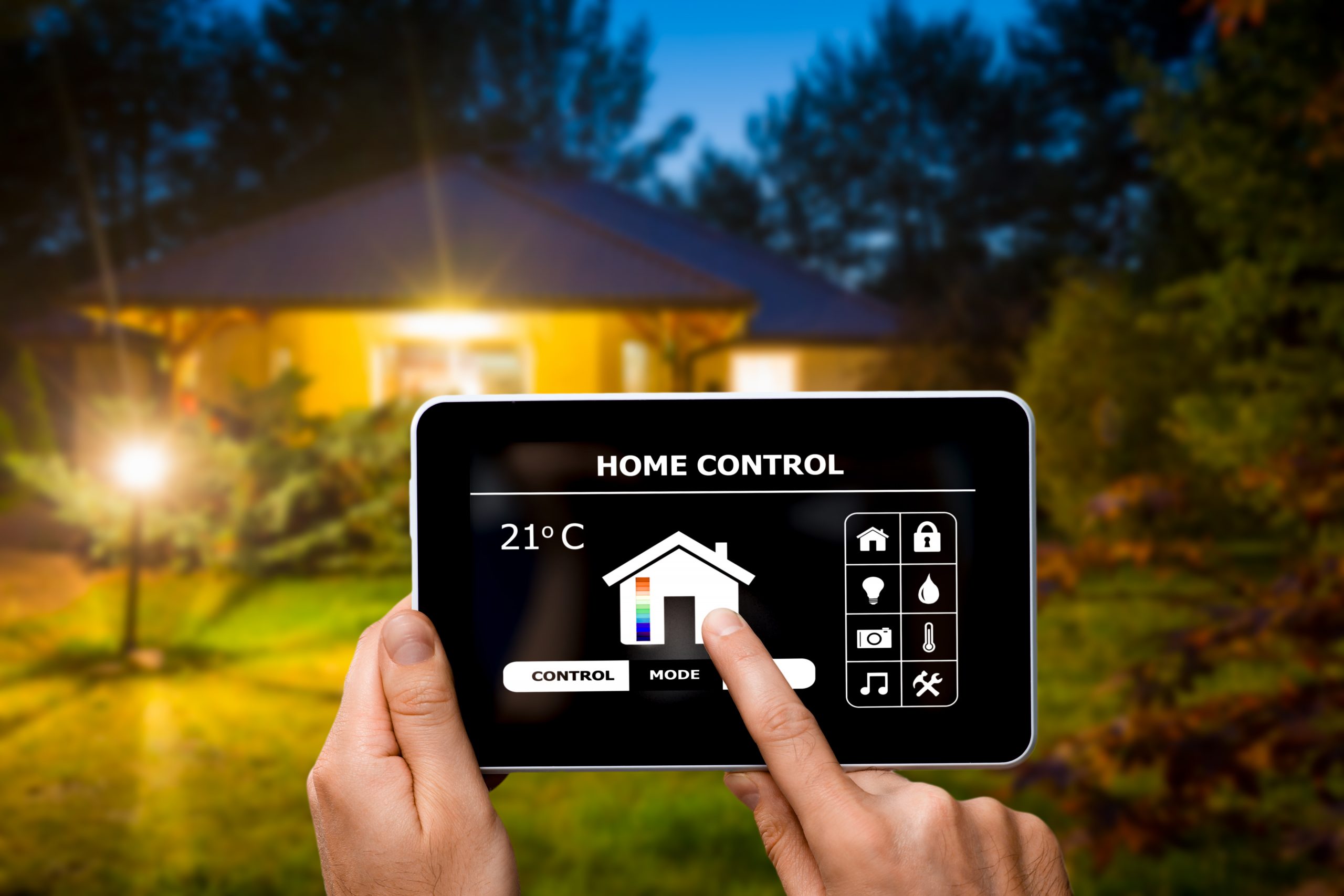Home automation system (or smart homes) are becoming more and more available and desirable. In this article, we have a quick look at some of the popular options, to give you something to consider when planning for your own home.
We look at some of the common areas of home automation:
- Lighting Control
- Motorised Window Treatments
- HVAC Control
- Multi-room Audio
- HD Video Distribution and Fibre IRS
- Data Networks
- Media Room
- Home Cinema
- Entry Systems
- The more specialist and obscure home automation system
And we also add some pro tips for you to consider…
Lighting Control
Home automation for your lighting can range from a modest one-room solution to a whole-home system. Traditionally, lighting control systems were hard-wired but there are some very credible retrofit wireless options too. Each circuit of light is controlled, and often dimmed, so that “scenes” of lighting are created, with great aesthetic results. The homeowner uses keypads, smart devices and switches as the interface. Additionally, events can be programmed to bring on, dim or turn off the lights at preset times.
Here is a further article about Lutron lighting and here are some examples of our work: Lakeside Home, La Puerta and Outside Lighting.

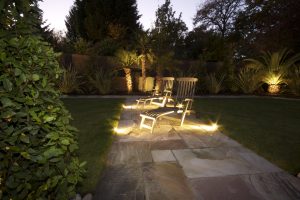
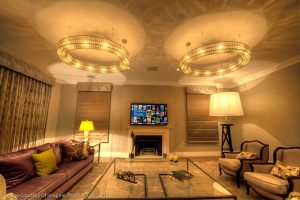
Advanced systems use vacation modes, geofencing and more. The systems often include non-lighting items such as water fountains and they can also be integrated with other home automation systems. For example, if the security alarm is triggered, the lighting can be programmed to come on in panic mode.
Pro-tip…
When thinking about your lighting, think about the control options very carefully as you will probably use them many times each day. (Here is our article about Lutron Alisse keypads.) Think about occupancy/absence sensors to turn off lights too.
Motorised Window Treatments
Home automation for windows includes motorised roller blinds, curtain tracks, tensioned shades, Roman shades & horizontal sheers. A good home automation system will include a solution that works well with other systems in your home, such as your lighting and home control system. Additionally, the control systems can provide intelligent automation, so, for example, shading the right part of the home when the natural light is at its strongest.
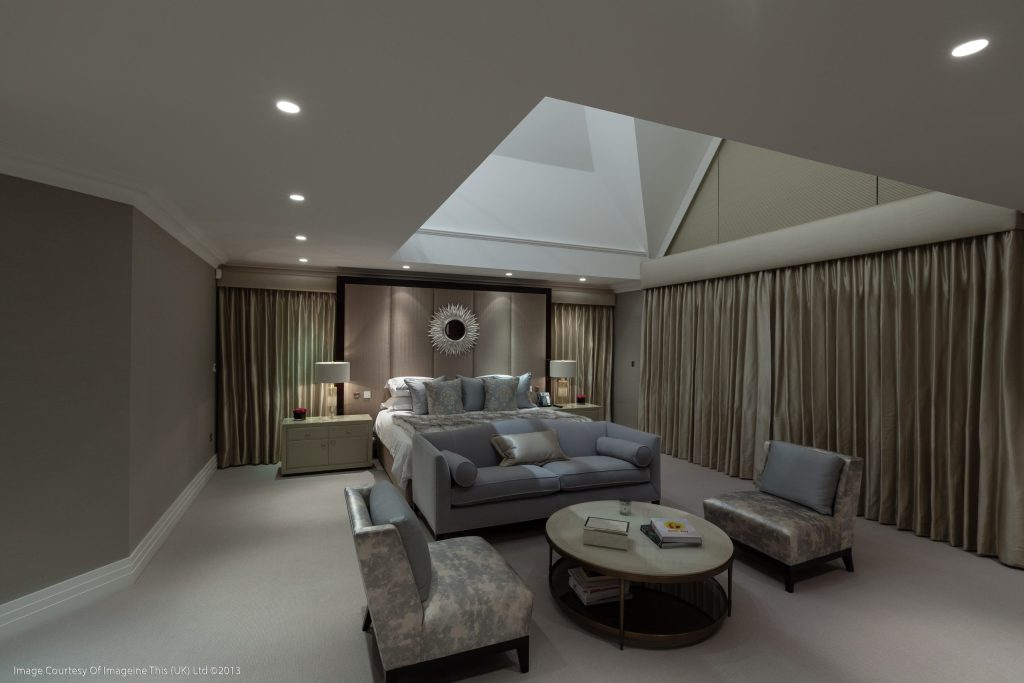
Here is another article about window treatments.
Motorised shades provide a pleasing aesthetic as well as security and privacy. Shading also protects art or soft furnishings from the damaging UV effects of the sun.
Pro Tip…
If you aren’t rewiring – check out the wireless options available – with batteries lasting for donkey’s years, its a convenient, non-disruptive option!
HVAC Control
Precise and convenient control of your home environment (in terms of heating, ventilation and air conditioning) is achieved within a well-designed home automation system. This maintains air quality and regulates internal temperatures and humidity. And of course, you can control your environment from anywhere in the world through your smart devices.
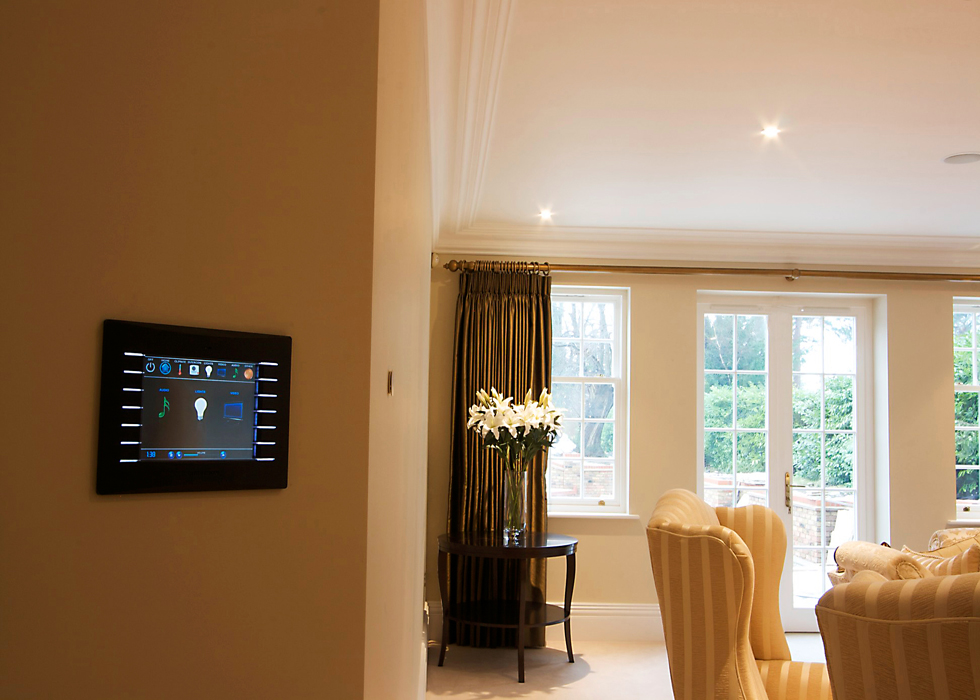
Being able to exactly control each area is much more efficient than a conventional, centrally controlled system.
Pro-tip…
Make sure that your heating or plumbing engineer works closely with your home automation expert – it’s essential that they supply correct and compatible components, such as motorised actuators.
Multi-Room Audio
Having the ability to listen to music in multiple locations is one of the first things on many of our clients’ wish lists. That may be in the form of a centrally located music server, distributed to multiple rooms, or it may be a solution where one can stream music to one of many local devices within each room.
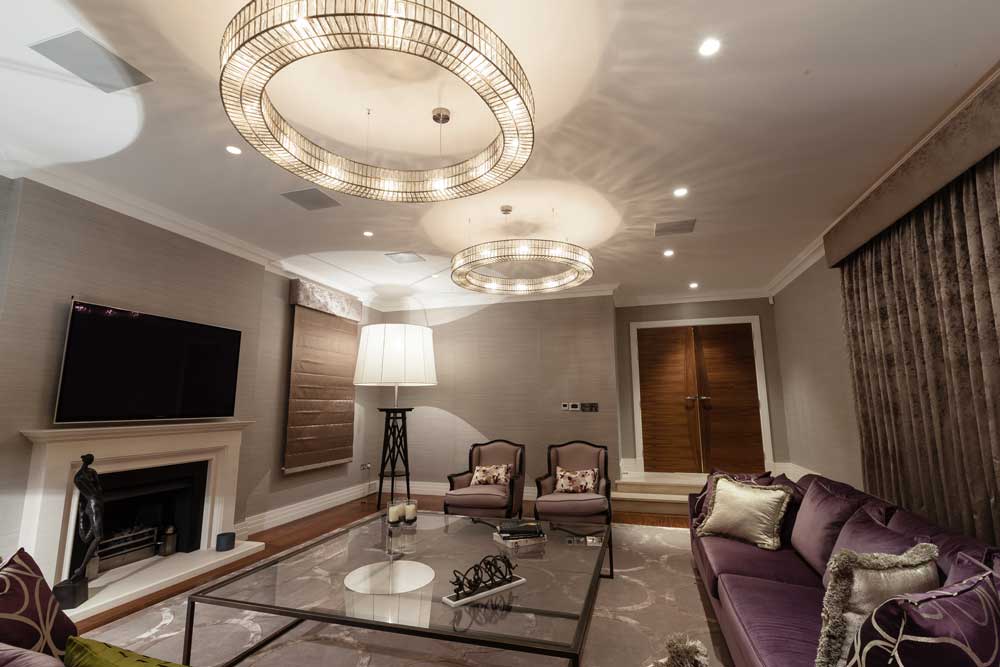
With a scale of options for the quality of the playback in each room, you can completely tailor the solution to your needs. Loudspeakers can be in-ceiling, in-wall, on-wall or freestanding, depending on your aesthetic preferences. Speakers can be plastered on the walls or disguised as artwork. And of course, control can be by way of a smart device, remote control, touch panel or keypad.
Pro-tip…
You may want to consider how your guests will use and interact with the home automation audio system too. Will you need guest access within your guest accommodation or living rooms?
Here’s an article about home cinema.
HD Video Distribution & RF Systems
Who wouldn’t want to watch HD TV in every room? Whether you want to opt for a basic Sky Q based option, or whether you want to distribute HD video via a matrix switch around the home, there are lots of options to consider.
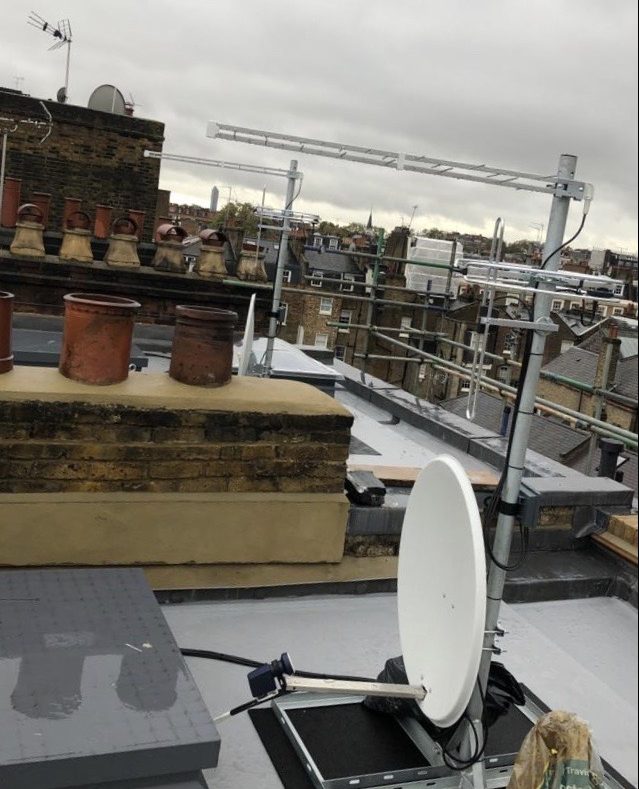
The most capable new systems are Fibre Integrated Reception Systems (FIRS). Fibre cable has minimal degradation of the signal and is not subject to electrical interference, as a more traditional coaxial solution would be. The signal and therefore the system is better, providing you with the best picture and sound possible.
It may also be desirable to site your satellite equipment away from the main facade of your home in a satellite “farm”, to avoid unsightly equipment spoiling the aesthetic of your home.
Pro-tip…
Dont forget to consider any foreign satellite systems that you may need.
Data Networks
Your data network is just about the single most important part of your home automation system and the basis for most of your home automation. Getting the infrastructure right is therefore essential. You should consider your wired and wireless needs, security and scalability. We can’t emphasise this enough – give a lot of thought to getting your network right because it will pay dividends in every other area.

Pro-tip…
A well-designed network will provide guest access to a segregated area, without compromising your security.
Media Room
A media room is usually a space that may share a purpose. For example, a living room, where you may entertain guests, listen to music etc. (As opposed to a cinema room, where the only purpose of the room is to watch movies.)
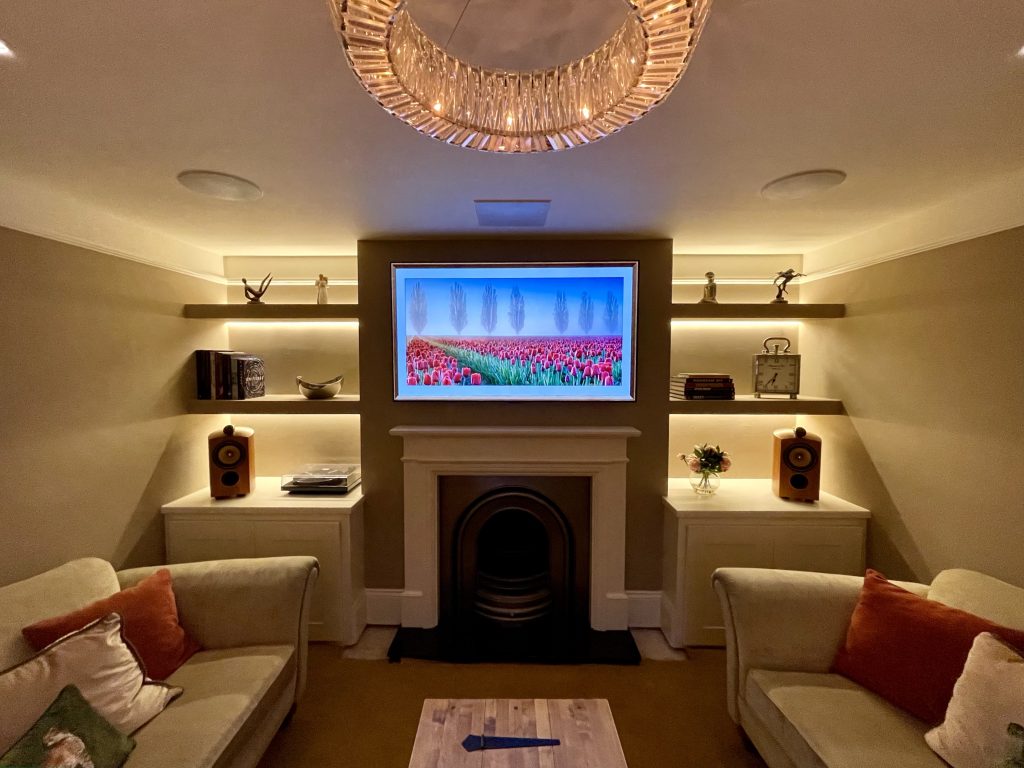
A media room doesn’t need to compromise on performance and can provide you with an authentic theatrical experience. They are sometimes harder (than a dedicated home cinema) to deliver well, but your experienced installer will be able to guide you through the process.
Pro-tip…
Since your media room will be a space with a shared purpose, try to think about how you will disguise the equipment, so that it complements the aesthetics. Consider projector/screen/tv lifters and drops, to keep the equipment discreet.
Here’s an article explaining the difference between a media room and a home cinema and here is an example of our work: A Wolf in Sheep’s Clothing.
Home Cinema
A dedicated home cinema is becoming a must for the modern executive home. Being a dedicated room, the home cinema will almost always boast a big screen and a projector. Authentic cinema seating will provide a comfortable, genuine feel to the experience.
Most of the latest home cinemas will support immersive audio, usually by means of discrete “height channels”, an LCR array (front left, centre and right), rears and subwoofers. You would expect to achieve a visual resolution of at least 8K. This will ensure that the cinema supports the latest technology for a superb experience.
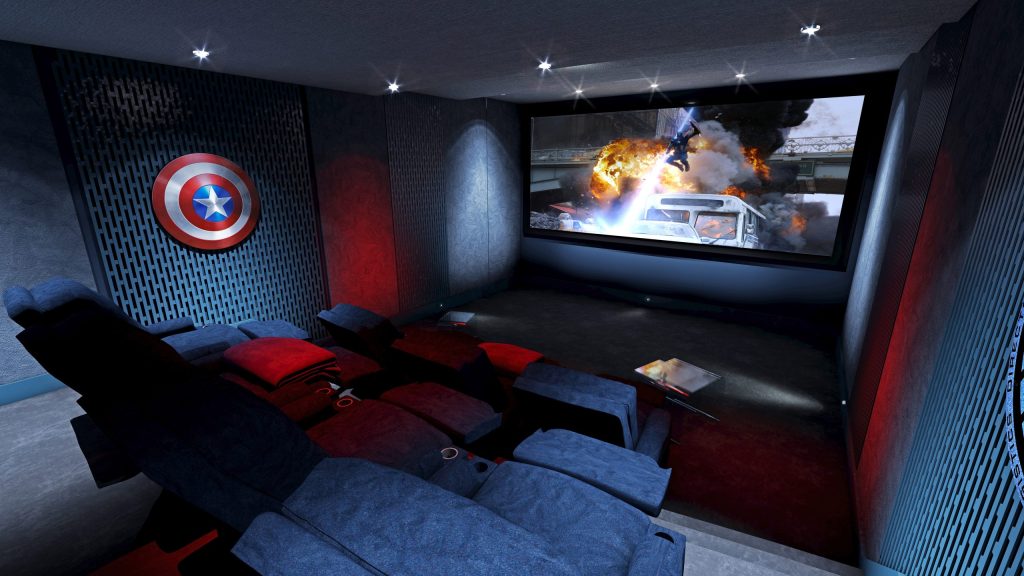
One of the most important considerations in planning and designing a home cinema is the acoustic characteristics and performance of the room itself. Please see our article “Acoustic Treatment for Home Cinemas“. An initial room analysis will identify where any acoustic issues will present and you can then plan the treatments for them accordingly.
Pro Tip…
Often overlooked, the environment within the home cinema room should be comfortable and controllable. It’s a good idea to consider control of the lighting, heating, AC, natural light etc. This will ensure that you can set the room up perfectly for your needs and tastes.
Here’s an article about home cinema design and here are some examples of our work: Immersive Home Cinema and Basement Cinema.
Entry Systems
Most door (or gate) entry systems are now IP based, meaning that they exchange information over the internal data network.
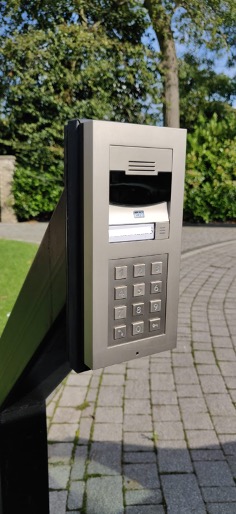
Very conveniently, these systems can be used whilst you are away from your property, meaning that you can see who is visiting or delivering whilst you are out. They allow you to interact with the gate caller, give the appearance of being in, or even “buzz” the caller in (unlock the gate to allow entry to certain parts of your property).
A well-designed system will integrate other smart home elements in your home automation system, for example, when you allow a caller entry to the property, driveway lights will turn on etc.
Pro Tip…
Consider adding RF fobs, so easy to use!
The More Specialist and Obscure
From golf simulators to garage parking lifts, from racing simulators to rising dance floors, there is an automated solution for everything! If you have any zany requests, please let our team know – they won’t be phased!
You will achieve a better overall solution if you plan for the devices you may want so that they can be integrated with other electronic systems. Where solutions are separate, they become clunky to use. A home automation system should remove friction.
In Conclusion
A home automation system should enhance your lifestyle. When planning your project, try to think about how you want to use technology within your home. Then think about how everything will fit together so that your home automation system will make life easier and more enjoyable for you.
Beware of adding separate layers of complexity by having autonomous systems. Instead, each element should work within the scope of the full home automation system scheme. The systems should intelligently work together, rather than work independently. For example, if you turn on the air conditioning but there is a window open, the system should alert you so that energy is not wasted.
We have been installing home automation systems for over two decades, and we have seen concepts come and go, but the enduring driver is to make life easier and more enjoyable for our clients. We can because we are, Image this…
For further reading, here are some home automation projects: La Puerta and The Shard. Alternatively, here is an article about our home automation installation services.

